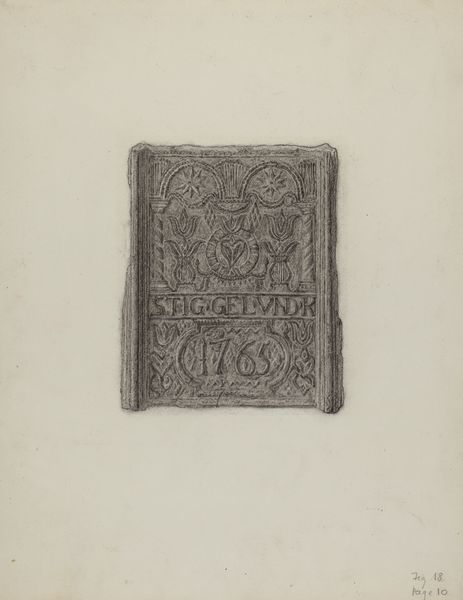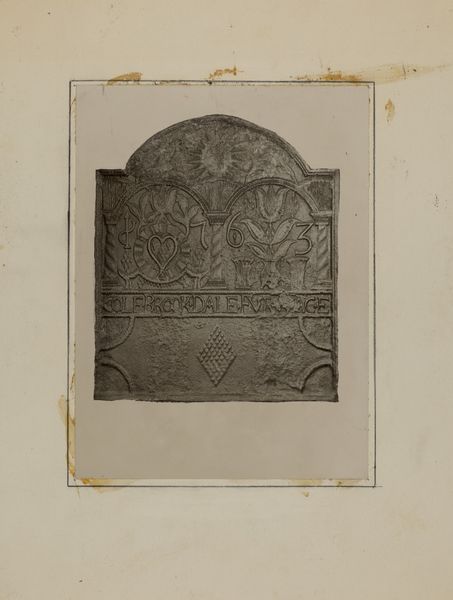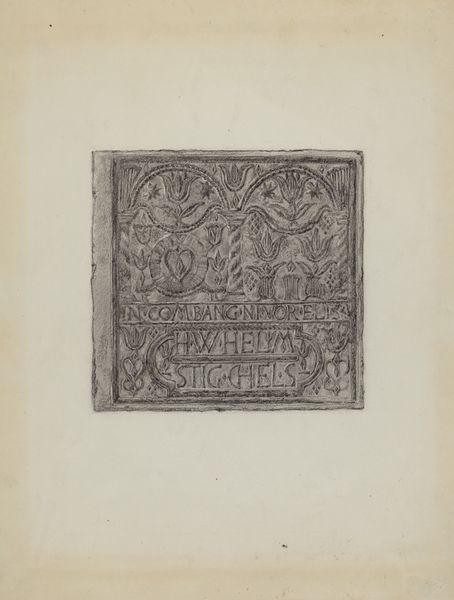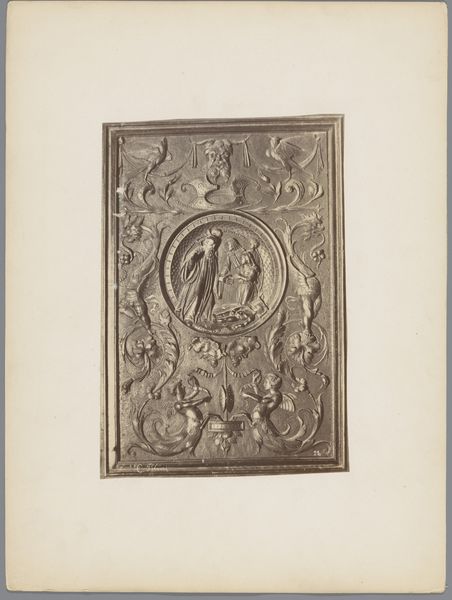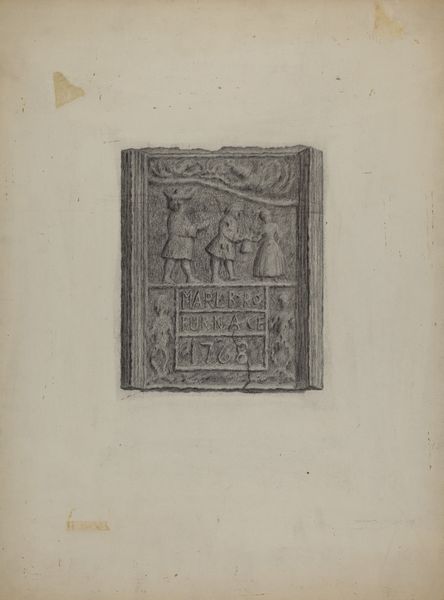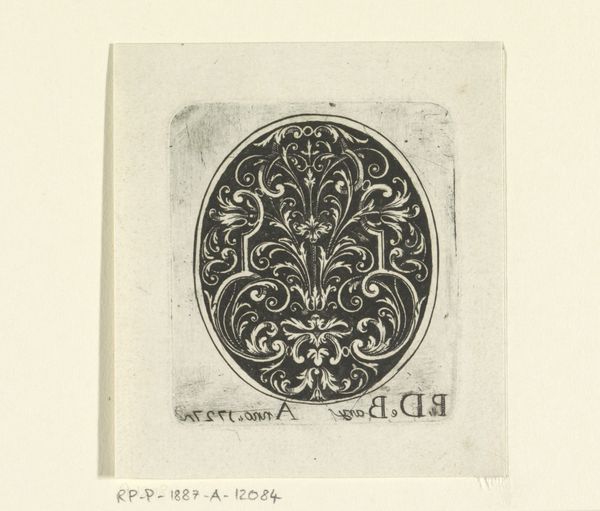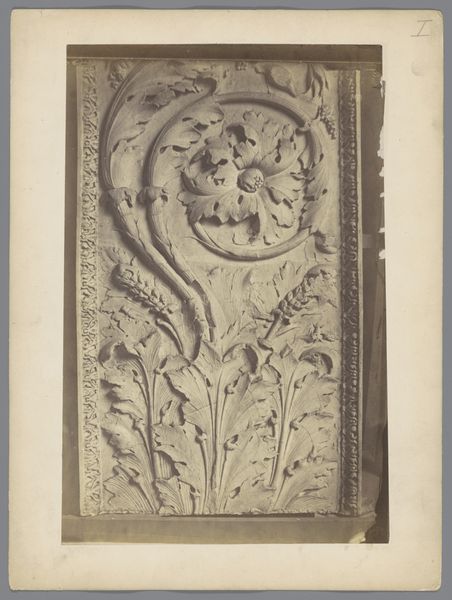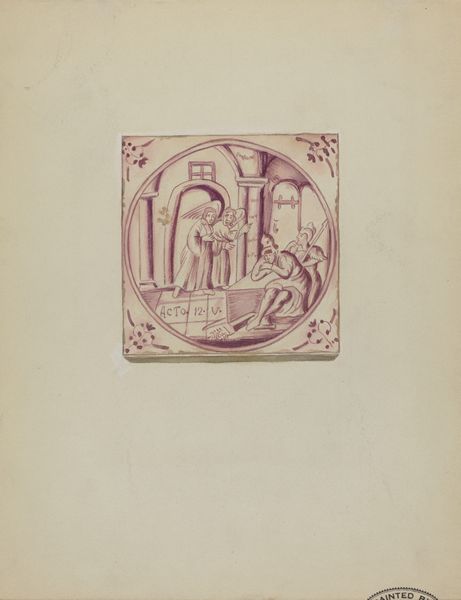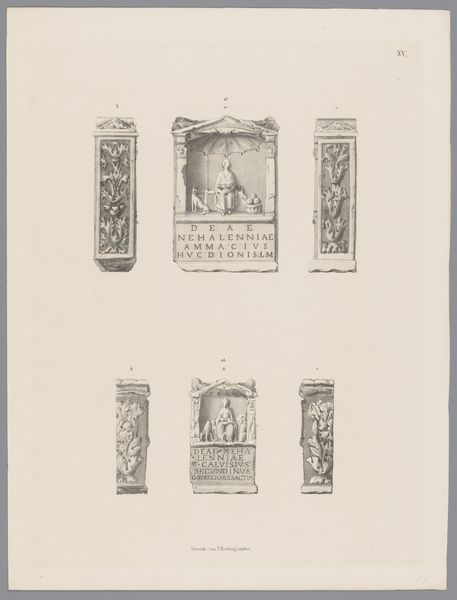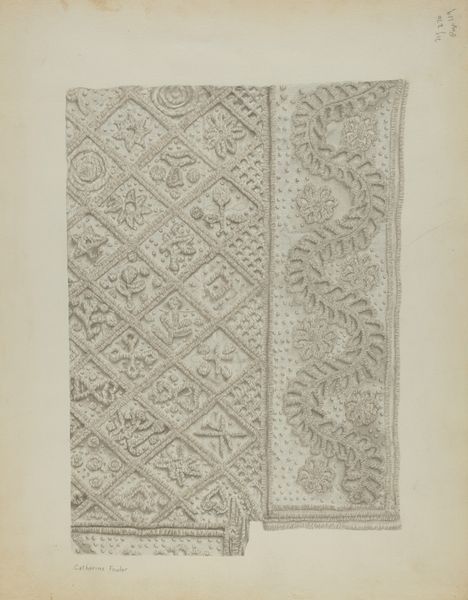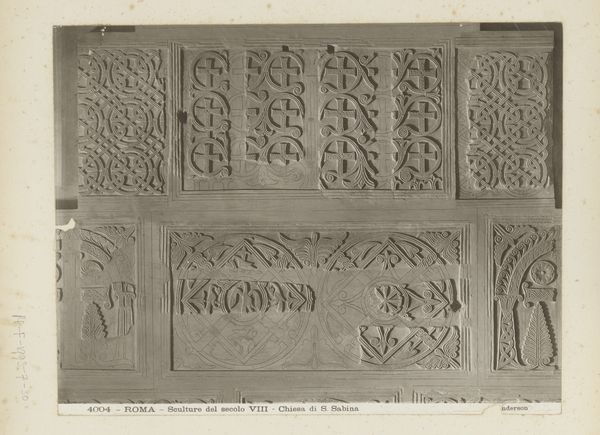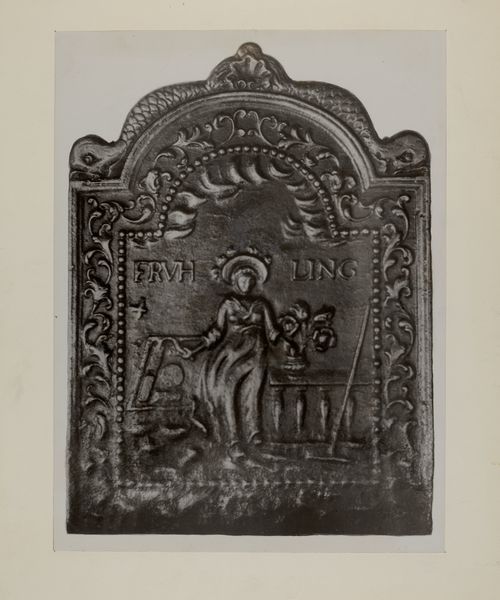
drawing, print, metal
#
drawing
#
medieval
# print
#
metal
#
folk-art
#
geometric
Dimensions: overall: 51.1 x 38.4 cm (20 1/8 x 15 1/8 in.) Original IAD Object: 21" high; 23 1/2" wide
Copyright: National Gallery of Art: CC0 1.0
Editor: This is Roy Weber’s “Pa. German Stove Plate” from around 1937, created as a drawing or print on metal. The imagery seems almost medieval. What jumps out at you? Curator: The arrangement of the imagery and text demonstrates a clear formal structure. We can analyze this through several means: first the relationship of the upper registers consisting of text with dense foliate compositions to the register at the bottom which includes numerals, possibly dating. These bottom elements are distinct in that the foliage functions more as borders, and creates a sense of enclosure for the numerals themselves. Editor: I see what you mean, it's almost symmetrical in its design, with clear horizontal divisions, but there are vertical elements that unify these sections into a pleasing whole. So, how do you read that kind of unified geometric approach? Curator: By reducing visual information, symmetry underscores the object’s intentionality; the symmetry directs our eye, the overall visual organization signals a clear purpose and structured way of conveying a message through design. Can you make out the inscription or symbols? Editor: I think so. It looks like "DAS LEBEN... IN...". What is the purpose of a plate like this? Was it just decorative? Curator: The lettering invites us to investigate the visual purpose, the metal construction and the geometric organisation indicate significance beyond mere ornamentation. We can use semiotics, which studies the connection between the signs and symbols to gain deeper meaning and cultural context of the symbols represented. These combined elements are not only aesthetically pleasing but are encoded with specific meanings to the artisans who fabricated the piece. Editor: So, by looking closely at its components, you can unlock its message! Thanks for pointing out all the visual intricacies that communicate so much more than just an aesthetic form. Curator: Precisely. Formal analysis, like a meticulous deciphering, brings the silent language of art to life.
Comments
No comments
Be the first to comment and join the conversation on the ultimate creative platform.
